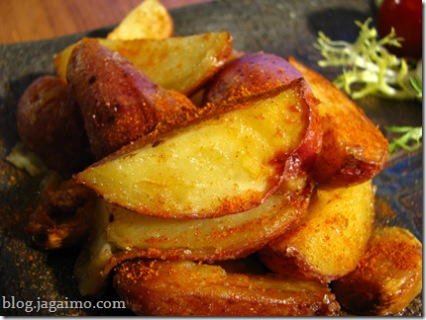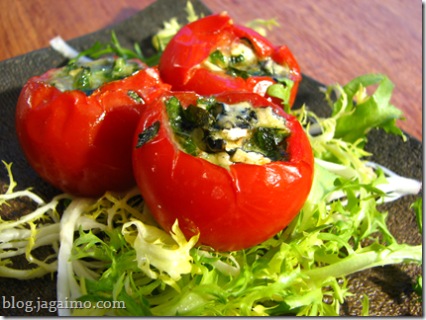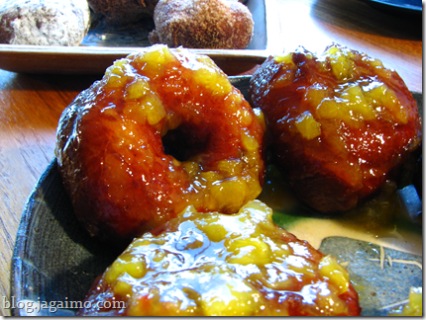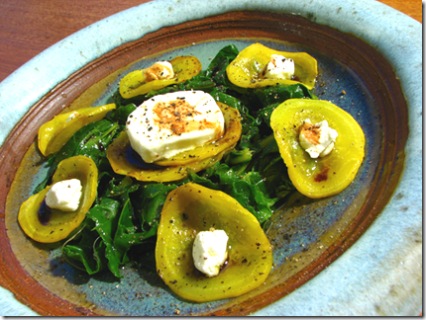Perhaps I'm just getting older, but I'm finding that I'm often happier eating starters than I am having a big main dish... Sometimes I don't even get to the main dish. Tonight was one of those nights. I had enough energy to do a little preparation of a few simple things, but nothing required more than three or four ingredients.
Salted roasted ginko nuts
These ginnan, or ginko nuts, were simply soaked in water for a few minutes, doused in salt, and roasted until tender. It's probably better to gently crack these before cooking them, because they'll be easier to peel at the table. Since these were all for me, I cracked and peeled all of them at the table.
The flesh varies from yellow to greenish. As with peanuts, there's an intermediate brownish skin inside the hard outer shell. You'll generally want to discard that thinner skin, as it adds nothing to the flavor and may be unpleasantly bitter com.
Salted, roasted ginnan are one of those snacks that I can't resist ordering when I spot them on a menu in Japan. There's really not much to making them. But the gently yielding texture, the mild bitterness and the touch of salt makes them a remarkable accompaniment to dry beer, sake, or shochu. (I'll have to take the beer thing on faith... I'm more of a sake and shochu guy myself).
I wasn't having anything to drink with dinner tonight, but I'm still a sucker for this salty snack. They also happen to have a fairly plentiful protein content, without the heavy fat burden that most nuts have.
Roasted Tomatoes Stuffed with Cheese and Basil
Small tomatoes, slightly larger than cherry tomatoes, with some Seastack cheese and basil. Any cheese would do, but that was the creamiest cheese I had handy. Roasted for just a bit over 6 minutes at 425°F, the cheese just begins to melt and the tomatoes become a bit sweeter as the roasting process claims some of their water.
The tomatoes are served atop some curly endive. I would normally be inclined to dress the endive with a vinaigrette. Thanks to my urge to keep things simple, and because I already had a nice creamy cheese in the tomatoes to go with the greens, I just mixed them with a little citrus juice and a tiny sprinkling of salt, making something closer to an ancient Roman salad.
Roasted Potatoes

I baked these potato wedges with a couple of cloves of garlic and a knob of butter. They've been seasoned with a chili-cumin salt blend, and the garlic cloves gently roast in the butter, adding a subtle hint of garlic flavor without becoming overwhelming.
Grilled porcini with balsamic vinegar
I've taken some thick slices of porcini and pan-seared them in a little olive oil, sprinkled with salt. They're finished with a simple splash of cheap sake and a drizzle of balsamic vinegar, which thickens up and coats the mushrooms beautifully. The slightly pine-like aroma still comes through, allowing the sauce to provide just enough complexity to wake up the natural flavors of the porcini.
I thought I might want some pasta or something to fill me up, but I was happy with just the addition of roasted spears of garlic shoots sprinkled with red pepper flakes and parmesan. Perhaps my breakfast and lunch were a bit too heavy today?





















